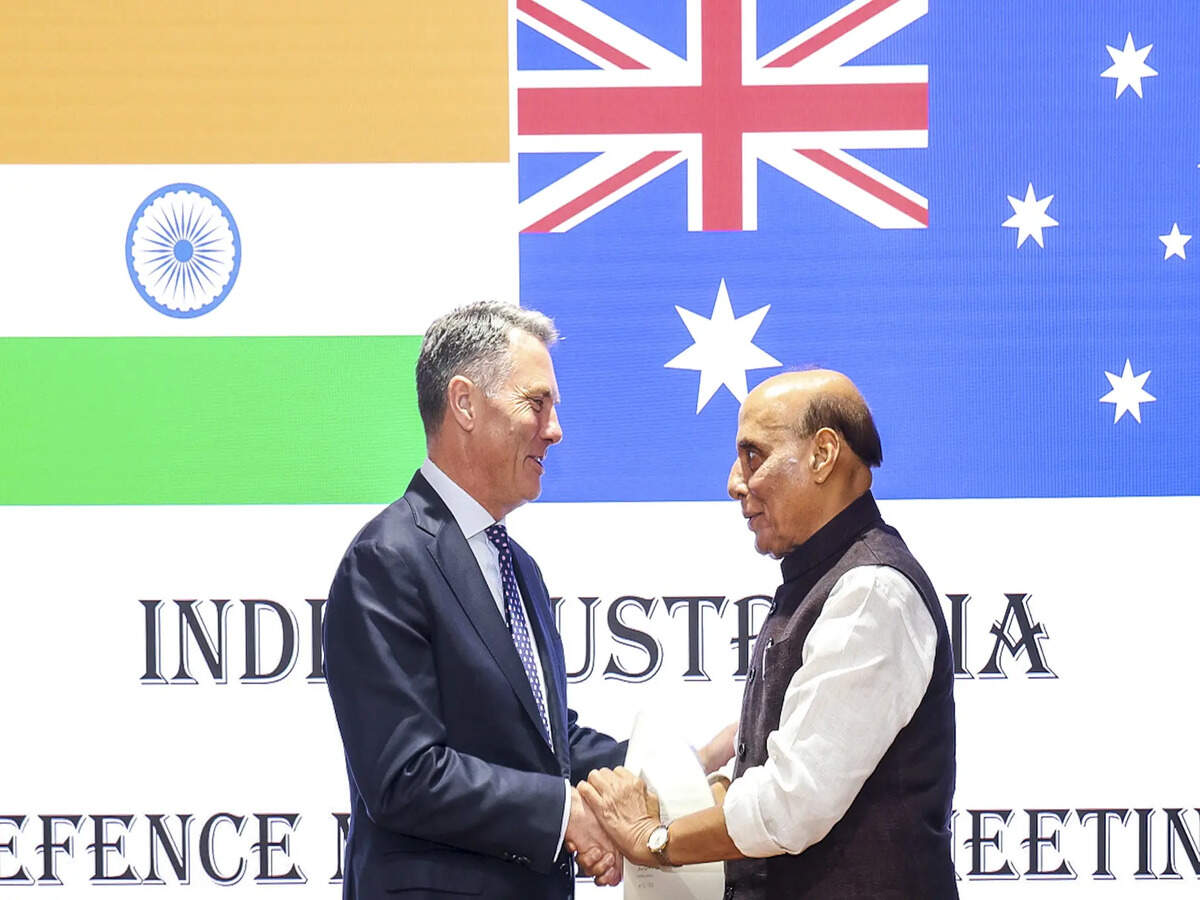India and Australia have signed a wide-ranging security agreement covering military talks, submarine rescue cooperation, and joint maritime operations. The pact strengthens Indo-Pacific defense ties, enhances interoperability, and builds on the Comprehensive Strategic Partnership. It reflects shared strategic goals and positions both nations for deeper collaboration in regional security.
India and Australia have signed a comprehensive bilateral security agreement aimed at deepening defense cooperation, enhancing maritime security, and advancing submarine rescue capabilities. The deal, formalized on October 9, 2025, during Defence Minister Rajnath Singh’s visit to Canberra, marks a strategic milestone in the evolving Indo-Pacific security architecture.
Agreement Highlights
- Defence Ministers Rajnath Singh and Richard Marles signed the pact at Parliament House, Canberra, marking the first visit by an Indian defence minister to Australia since 2013
- The agreement includes the establishment of Joint Staff Talks between the two militaries to facilitate operational planning and interoperability
- A key component is the Implementing Arrangement on Mutual Submarine Rescue Support and Cooperation, enabling joint rescue operations and technical collaboration
- The pact also expands intelligence sharing, air-to-air refueling coordination, and joint maritime exercises under a new Maritime Security Collaboration Roadmap
- Both nations reaffirmed their commitment to annual Defence Ministers’ Dialogues and increased service-to-service engagements
Strategic Context
- The agreement builds on the Comprehensive Strategic Partnership established in 2020 and reflects growing convergence on regional security priorities
- India’s participation in Australia’s Talisman Sabre multilateral exercise in July 2025, involving 35,000 personnel from 19 nations, showcased its expanding role in Indo-Pacific defense networks
- The pact complements India’s engagements within the Quad alliance (India, Australia, Japan, United States), which continues to focus on maritime domain awareness and regional stability
Operational Implications
- The submarine rescue arrangement includes India’s potential participation in Australia’s Black Carillon exercise and reciprocal naval engagements
- Enhanced logistics support and air refueling coordination will improve joint mission readiness and disaster response capabilities
- The agreement paves the way for Indian officers to train at Australian defense institutions, including the Defence College and Defence Force Academy
Outlook
- The deal signals a maturing defense relationship rooted in shared democratic values and strategic interests
- It positions both countries to respond more effectively to regional challenges, including rising Chinese naval activity and humanitarian crises
- Analysts view the agreement as a blueprint for future defense industrial collaboration and technology sharing
Sources: Asharq Al-Awsat, Army Recognition, Australian Defence Ministry





